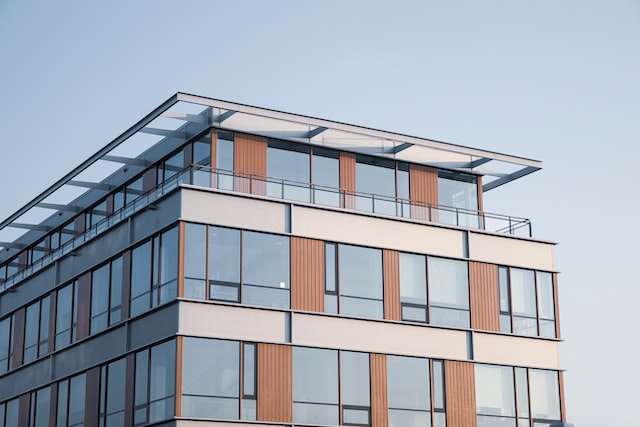Real estate sector is one of the most globally recognized sectors. It comprises of four sub sectors – housing, retail, hospitality, and commercial. The growth of this sector is well complemented by the growth in the corporate environment and the demand for office space as well as urban and semi-urban accommodations. The construction industry ranks third among the 14 major sectors in terms of direct, indirect and induced effects in all sectors of the economy.
In India, the real estate sector is the second-highest employment generator, after the agriculture sector. It is also expected that this sector will incur more non-resident Indian (NRI) investment, both in the short term and the long term.
Construction sector is the biggest success story of this decade. An indicator of economy’s health, a major factor in sustaining the growth momentum is witnessing unprecedented demand from emerging market economies. Governments, regulations and private sector are all aligned in the same direction of building world class infrastructure to support the growth story. Companies from developed economies are seeking opportunities to contribute to the growth story and in the process revive their stagnant top line. Huge investments from private sector are pouring to bridge the gap between allocated funds and huge demand thereby forging public-private partnerships.
Key trends shaping the industry:
Opportunistic Growth
Entry of New Players
Innovative Business Models
Challenges facing the players involved in the industry:
Project Execution
Supply Constraints
Shortage of Expertise
How can OMNIO help?

Omnio has built expertise in project management and business transformation skills that have been used successfully to help construction companies deliver quality results. OMNIO has contributed in expediting project execution by streamlining operational processes across the construction ecosystem to deliver benefits to the entire set of players. Developing strategic options in sourcing and building world class skillsets using benchmarking techniques has distinguished OMNIO from others in supporting construction industry for the last three decades.
To know more about our Real Estate Industry Practices and services, Give us a call
Real estate sector is one of the most globally recognized sectors. It comprises of four sub sectors – housing, retail, hospitality, and commercial. The growth of this sector is well complemented by the growth in the corporate environment and the demand for office space as well as urban and semi-urban accommodations. The construction industry ranks third among the 14 major sectors in terms of direct, indirect and induced effects in all sectors of the economy.
In India, the real estate sector is the second-highest employment generator, after the agriculture sector. It is also expected that this sector will incur more non-resident Indian (NRI) investment, both in the short term and the long term. Bengaluru is expected to be the most favoured property investment destination for NRIs, followed by Ahmedabad, Pune, Chennai, Goa, Delhi and Dehradun.

ROBUST DEMAND
- According to Savills India, real estate demand for data centres is expected to increase by 15-18 million sq. ft. by 2025.
- Demand for residential properties has surged due to increased urbanisation and rising household income. India is among the top 10 price appreciating housing markets internationally.
- Organised retail real estate stock is expected to increase by 28% to 82 million sq. ft. by 2023.

ATTRACTIVE OPPORTUNITIES
- As per ICRA estimates, Indian firms are expected to raise >Rs. 3.5 trillion (US$ 48 billion) through infrastructure and real estate investment trusts in 2022, as compared with raised funds worth US$ 29 billion to date.
- Private market investor, Blackstone, which has significantly invested in the Indian real estate sector (worth Rs. 3.8 lakh crore (US$ 50 billion), is seeking to invest an additional Rs. 1.7 lakh crore (US$ 22 billion) by 2030.
POLICY SUPPORT
- Driven by increasing transparency and returns, there’s a surge in private investment in the sector.
- Indian real estate attracted U$ 5 billion institutional investments in 2020, equivalent to 93% of transactions recorded in the previous year.
- The real estate segment attracted private equity investments worth Rs. 23,946 crore (US$ 3,241 million) across 19 deals in Q4 FY21.
INCREASING INVESTMENTS
- In the first-half of 2021, India registered investments worth US$ 2.4 billion into real estate assets, a growth of 52% YoY.
- Construction is the third-largest sector in terms of FDI inflow. FDI in the sector (including construction development & activities) stood at US$ 52.48 billion between April 2000 to December 2021.
By 2040, real estate market will grow to Rs. 65,000 crore (US$ 9.30 billion) from Rs. 12,000 crore (US$ 1.72 billion) in 2019. Real estate sector in India is expected to reach US$ 1 trillion in market size by 2030, up from US$ 200 billion in 2021 and contribute 13% to the country’s GDP by 2025. Retail, hospitality, and commercial real estate are also growing significantly, providing the much-needed infrastructure for India’s growing needs.
India’s real estate sector saw over 1,700 acres of land deals in the top 7 cities in 1 year. Foreign investments in the commercial real estate sector were at US$ 10.3 billion from 2017-21. As of February 2022, Developers expect demand for office spaces in SEZs to shoot up after the replacement of the existing SEZs act.
As per ICRA estimates, Indian firms are expected to raise >Rs. 3.5 trillion (US$ 48 billion) through infrastructure and real estate investment trusts in 2022, as compared with raised funds worth US$ 29 billion to date.

Around 40 million square feet were delivered in India in 2021. It is expected that the country will have a 40% market share in the next 2-3 years. India is expected to deliver 46 million square feet in 2022.
According to Savills India, real estate demand for data centres is expected to increase by 15-18 million sq. ft. by 2025.
In 2020, the manufacturing sector accounted for 24% of office space leasing at 5.7 million square feet. SMEs and electronic component manufacturers leased the most between Pune, Chennai and Delhi NCR, followed by auto sector leasing in Chennai, Ahmedabad and Pune. The 3PL, e-commerce and retail segments accounted for 34%, 26% and 9% of office space leases, respectively. Of the total PE investments in real estate in Q4 FY21, the office segment attracted 71% share, followed by retail at 15% and residential and warehousing with 7% each.
India’s gross leasing volume in the top 8 cities stood at 16.2 this was 12.4% quarter to quarter growth in 2021. India’s net absorption of the office market stood at 11.56 million square feet in quarter four of 2021. This was an 86% rise QoQ.
Between July 2021 and September 2021, a total of 55,907 new housing units were sold in the eight micro markets in India (59% YoY growth).
In the third quarter of 2021 (between July 2021 and September 2021), new housing supply stood at ~65,211 units, increased by 228% YoY across the top eight cities compared with ~19,865 units launched in the third quarter of 2020.
In 2021-22, the commercial space is expected to record increasing investments. For instance, in October 2021, Chintels Group announced to invest Rs. 400 crore (US$ 53.47 million) to build a new commercial project in Gurugram, covering a 9.28 lakh square feet area.
According to the Economic Times Housing Finance Summit, about 3 houses are built per 1,000 people per year compared with the required construction rate of five houses per 1,000 population. The current shortage of housing in urban areas is estimated to be ~10 million units. An additional 25 million units of affordable housing are required by 2030 to meet the growth in the country’s urban population.


Indian real estate sector has witnessed high growth in the recent times with rise in demand for office as well as residential spaces. According to Colliers India, a property consultant, institutional investments in the Indian real estate sector are expected to increase by 4% to reach Rs. 36,500 crore (US$ 5 billion) in 2021, driven by rising interest of investors towards capturing attractive valuations amid the pandemic. According to a recent report by Colliers India, private equity investments in Indian real estate reached US$ 2.9 billion in the first half of 2021, which was a >2x increase from the first half in 2020.
Exports from SEZs reached Rs. 7.96 lakh crore (US$ 113.0 billion) in FY20 and grew ~13.6% from Rs. 7.1 lakh crore (US$ 100.3 billion) in FY19.
In July 2021, the Securities and Exchange Board of India lowered the minimum application value for Real Estate Investment Trusts from Rs. 50,000 (US$ 685.28) to Rs. 10,000-15,000 (US$ 137.06 – US$ 205.59) to make the market more accessible to small and retail investors.
According to the data released by Department for Promotion of Industry and Internal Trade Policy (DPIIT), construction is the third-largest sector in terms of FDI inflow. Construction is the third-largest sector in terms of FDI inflow. FDI in the sector (including construction development & activities) stood at US$ 52.48 billion between April 2000 to December 2021.

Some of the major investments and developments in this sector are as follows:
- Between January 2021 and September 2021, private equity investment inflows into the real estate sector in India stood at US$ 3.3 billion.
- Home sales volume across seven major cities in India surged 113% YoY to reach ~62,800 units in the third quarter 2021, from 29,520 units in the same period last year, signifying healthy recovery post the strict lockdown imposed in the second quarter due to the spread of COVID-19 in the country.
- In the third quarter of 2021, the Institutional real estate investment in India increased by 7% YoY. Investment registered in the first nine months of 2021 stood at US$ 2,977 million, as against US$ 1,534 million in the same period last year.
- In November 2021, Ascendas India bought Aurum Ventures’ 16-storey commercial tower in Navi Mumbai for Rs. 353 crore (US$ 47 million), making it the largest deal of a standalone commercial tower by a global institutional investor during the past few years.
- REA India-owned online real estate company Housing.com tied up with online legal assistance start-ups LegalKart, Lawrato, Vidhikarya and Vakil in 2021 to offer legal advice and assistance to homebuyers.
- Top three cities—Mumbai (~39%), NCR-Delhi (~19%) and Bengaluru (~19%)—attracted ~77% of the total investments recorded in the third quarter of 2021.
- India's flexible space stock is likely to expand by 10-15% YoY, from the current 36 million sq. ft., in the next three years, according to a report by CBRE.
- To establish an investment platform for the Indian retail-led mixed-use assets, in June 2021, GIC announced to acquire a minority stake in Phoenix Mills’ portfolio (worth US$ 733 million).
- In May 2021, Blackstone Real Estate acquired Embassy Industrial Parks for Rs. 5,250 crore (US$ 716.49 million) to expand its presence in the country.
- To expand into the Indian real estate market, SRAM & MRAM Group collaborated with Area CAS Developers and Infrastructure Private Limited (Area Group), and Gupta Builders and Promoters Private Limited (GBP Group) of India. It plans to invest US$ 100 million in the real estate sector.
- According to Anarock, housing sales in seven cities increased by 29% and new launches by 51% in Q4 FY21 over Q4 FY20.
- Private market investor, Blackstone, which has significantly invested in the Indian real estate sector (worth Rs. 3.8 lakh crore (US$ 50 billion) is seeking to invest an additional Rs. 1.7 lakh crore (US$ 22 billion) by 2030.
- In 2021, working remotely is being adopted at a fast pace and demand for affordable houses with ticket size below Rs. 40-50 lakh is expected to rise in Tier 2 and 3 cities, leading to an increase in prices in those geographies.
- In April 2021, HDFC Capital Advisors (HDFC Capital) partnered with Cerberus Capital Management (Cerberus) to create a platform that will focus on high-yield opportunities in the residential real estate sector in India. The platform seeks to purchase inventory and provide last-mile funding for under construction residential projects across the country.
- In March 2021, Godrej Properties announced it would launch 10 new real estate projects in Q4.
- In March 2021, Godrej Properties increased its equity stake in Godrej Realty from 51% to 100% by acquiring equity shares from HDFC Venture Trustee Company.
- In January 2021, SOBHA Limited’s wholly owned subsidiary, Sabha Highrise Ventures Pvt. Ltd. acquired 100% share in Annalakshmi Land Developers Pvt. Ltd.

